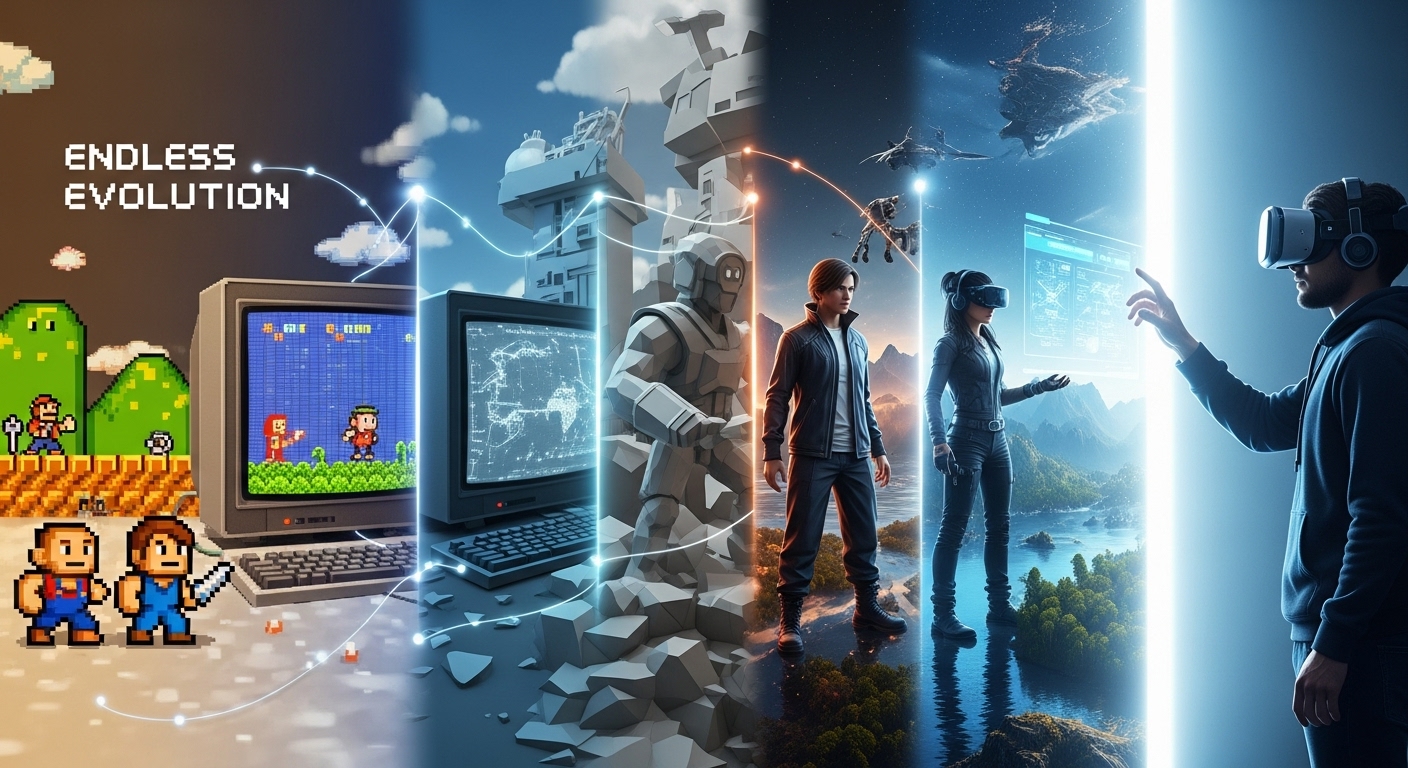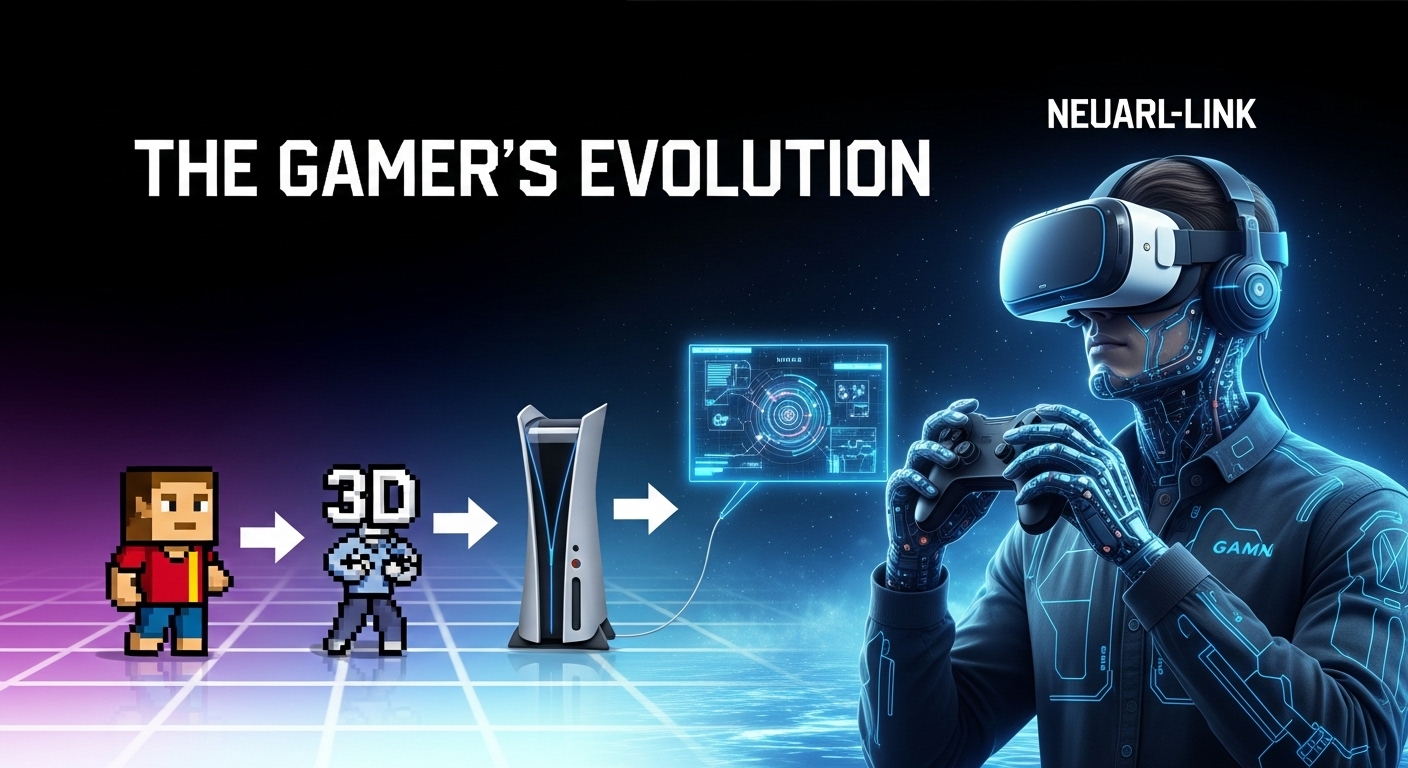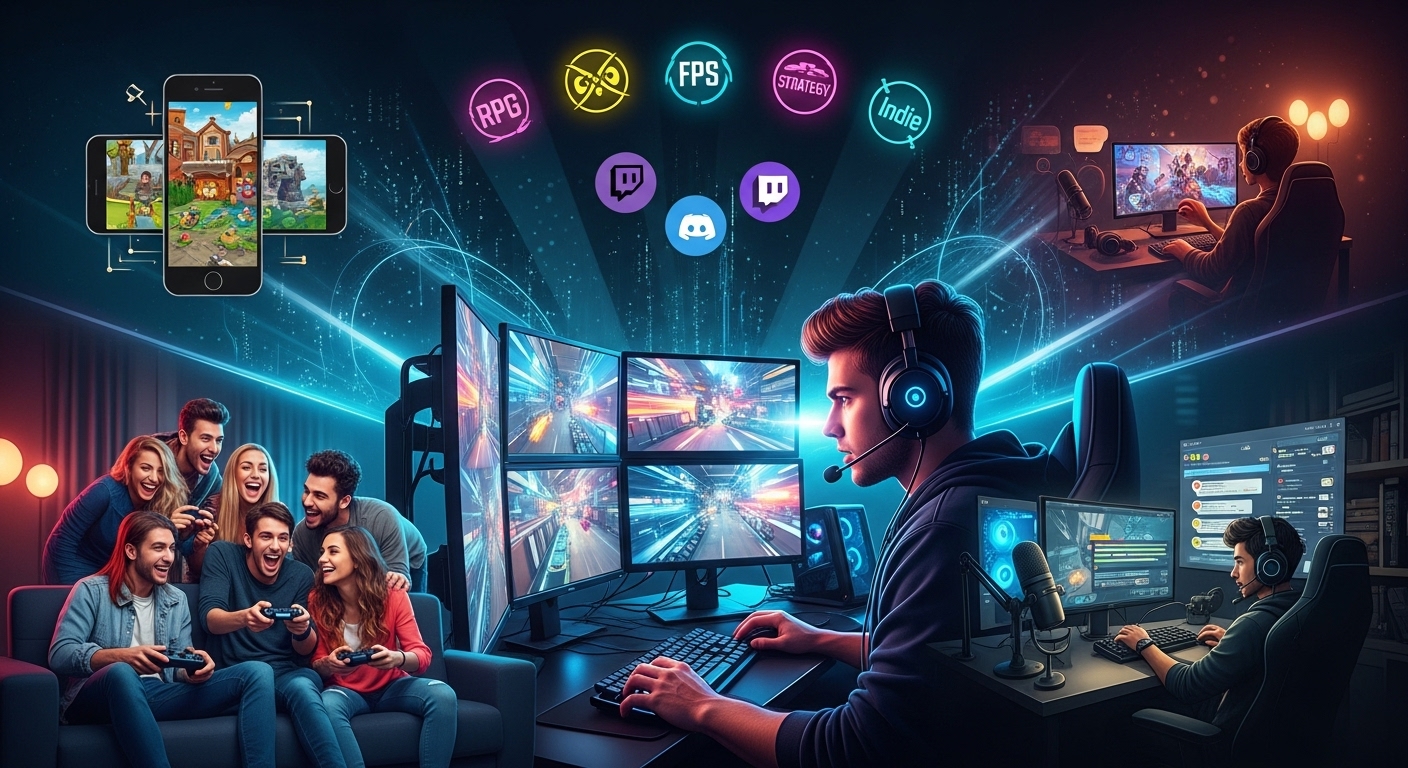Gaming has come a long way since its inception, evolving from simple arcade games to immersive, interactive experiences that push the boundaries of technology and creativity. What was once seen as a niche hobby has now blossomed into a multi-billion-dollar industry, with millions of players worldwide across various platforms. But where is gaming headed next? With emerging technologies, evolving gameplay mechanics, and a rapidly growing gaming community, the future of gaming holds a lot of exciting possibilities. Let’s dive into the next steps for this dynamic and ever-changing industry.
The Evolution of Storytelling in Gaming
Storytelling has always been an essential component of video games, but in recent years, it has grown into a central focus of many high-profile titles. Games today are not just about gameplay mechanics or flashy visuals—they are powerful narratives that players can actively participate in. What sets modern gaming apart is its ability to tell stories that rival those found in books, movies, and TV shows.
Games like The Last of Us, Red Dead Redemption 2, and God of War have proven that video games are a unique medium for telling emotionally engaging stories. These games combine breathtaking visuals, complex characters, and world-building to create interactive experiences that evoke genuine emotional responses. The player’s choices within the narrative often have significant consequences, further immersing them in the storyline.
As we move forward, we can expect to see even more emphasis on narrative-driven games, where the story and character development are just as important as the gameplay. With advancements in AI and motion capture technology, developers will continue to create worlds where players feel like they are part of something bigger, emotionally invested in the outcome of the game.
Immersive Technology: Virtual and Augmented Reality
Virtual Reality (VR) and Augmented Reality (AR) have already made waves in the gaming world, but they are still in the early stages of their potential. VR immerses players in entirely digital worlds, creating an experience where the line between reality and the game blurs. Using headsets and motion controllers, VR allows players to physically engage with the game world. This level of immersion has completely transformed how we experience games, allowing players to explore environments as if they are actually there.
On the other hand, AR enhances the real world by adding digital elements to it. Games like Pokémon Go have already shown the power of AR, allowing players to interact with the digital world through their smartphones while exploring their real-world surroundings.
Looking ahead, VR and AR will continue to evolve, with more sophisticated hardware and software. In VR, we can expect more realistic simulations, better tracking, and improved visuals, making gaming experiences even more immersive. AR could redefine how we play games on the go, blending the virtual world with the physical world in ways that we can’t yet fully imagine.
Cloud Gaming: The End of Hardware Limitations?
One of the most exciting advancements in the gaming world is cloud gaming. Traditionally, playing graphically intense games required powerful hardware, such as a gaming PC or a console. However, cloud gaming platforms like Google Stadia, Xbox Cloud Gaming, and NVIDIA GeForce Now allow players to stream games directly from the cloud, meaning they no longer need to rely on local hardware to play cutting-edge titles. As long as players have a reliable internet connection, they can access high-quality games from virtually any device, whether it’s a smartphone, tablet, or even a smart TV.
Cloud gaming will significantly change the gaming landscape by making games more accessible to a broader audience. It eliminates the need for costly gaming rigs or consoles, lowering the entry barrier for gamers who might not have the resources to invest in expensive hardware. As internet speeds improve and cloud infrastructure becomes more robust, cloud gaming will become even more seamless, offering an experience that rivals traditional gaming platforms.
In addition, cloud gaming paves the way for cross-platform play, where gamers on different devices can interact with each other in the same game. Whether you’re on a PC, a console, or a mobile device, cloud gaming ensures that everyone can participate in the same online experience.
Open-World Games: The Ultimate Sandbox
Open-world games have become increasingly popular, and they are here to stay. These games offer vast, explorable worlds that give players the freedom to approach objectives in any order, interact with NPCs (non-playable characters), and engage in side activities that enhance the overall experience. Games like The Witcher 3, GTA V, and Elden Ring are prime examples of how well-designed open worlds can captivate players for hours, if not days.
The beauty of open-world games lies in their non-linear structure. Players are no longer restricted to a fixed path, and instead, they can carve their own adventure, discovering hidden secrets, completing side quests, and shaping the world around them. The open-world format also allows for immersive role-playing, where decisions made by the player have lasting consequences on the story and the game world.
Looking to the future, we can expect open-world games to become even more detailed and expansive. Developers will continue to refine their ability to create living, breathing worlds where everything from the weather to the economy reacts to the player’s choices. As technology advances, we may even see procedurally generated worlds—dynamic environments that evolve in real-time as players explore them.
The Rise of Esports: Gaming as a Global Spectacle
Esports is one of the fastest-growing sectors within the gaming industry, and it has already reached impressive heights. What started as casual competitions between friends has evolved into organized, professional tournaments with millions of viewers and huge prize pools. Games like League of Legends, Fortnite, and Dota 2 have turned competitive gaming into a spectator sport, with events streamed live to audiences all over the world.
The growth of esports has led to the creation of professional teams, coaches, and even sponsorship deals with major brands. Esports tournaments are now held in massive arenas, drawing in crowds akin to those of traditional sports events. The professionalization of esports has turned it into a legitimate career for many players, who now make a living from competing in tournaments and streaming their gameplay.
As esports continue to gain popularity, we can expect even more investment in the industry. The development of esports leagues, the rise of college esports programs, and the increasing global reach of competitive gaming suggest that esports will continue to be a dominant force in the entertainment landscape for years to come.
Indie Games: The Rise of Creative Freedom
While big studios and AAA games dominate the market, the indie game scene has flourished in recent years. Independent developers are taking risks, creating unique and innovative titles that often push the boundaries of what games can be. Games like Hollow Knight, Celeste, and Undertale have shown that you don’t need a massive budget to create a game that resonates with players.
The rise of digital storefronts like Steam, itch.io, and the Epic Games Store has allowed indie developers to self-publish their games, bypassing traditional publishing routes. These platforms give indie games a global audience, allowing small teams to reach millions of players.
Indie games are often more experimental, offering creative and unconventional gameplay, stories, and art styles. This has led to a greater diversity of games and more varied experiences for players. As tools for game development continue to improve, we can expect even more indie games to challenge the status quo and redefine what gaming can be.
Conclusion: The Never-Ending Adventure
Gaming is an industry that is constantly evolving, and the future looks more exciting than ever. With the rise of new technologies like VR, AR, cloud gaming, and the continued growth of esports and indie games, players are in for an unprecedented level of innovation. What was once a form of entertainment has transformed into a cultural force that touches every part of our lives. The possibilities for what’s next are endless, and as technology continues to advance, so too will the worlds we explore, the stories we experience, and the ways we connect with each other through the power of play.
As gaming continues to grow, we can only imagine where this journey will take us. One thing is for certain: the future of gaming will be an adventure we won’t want to miss.



